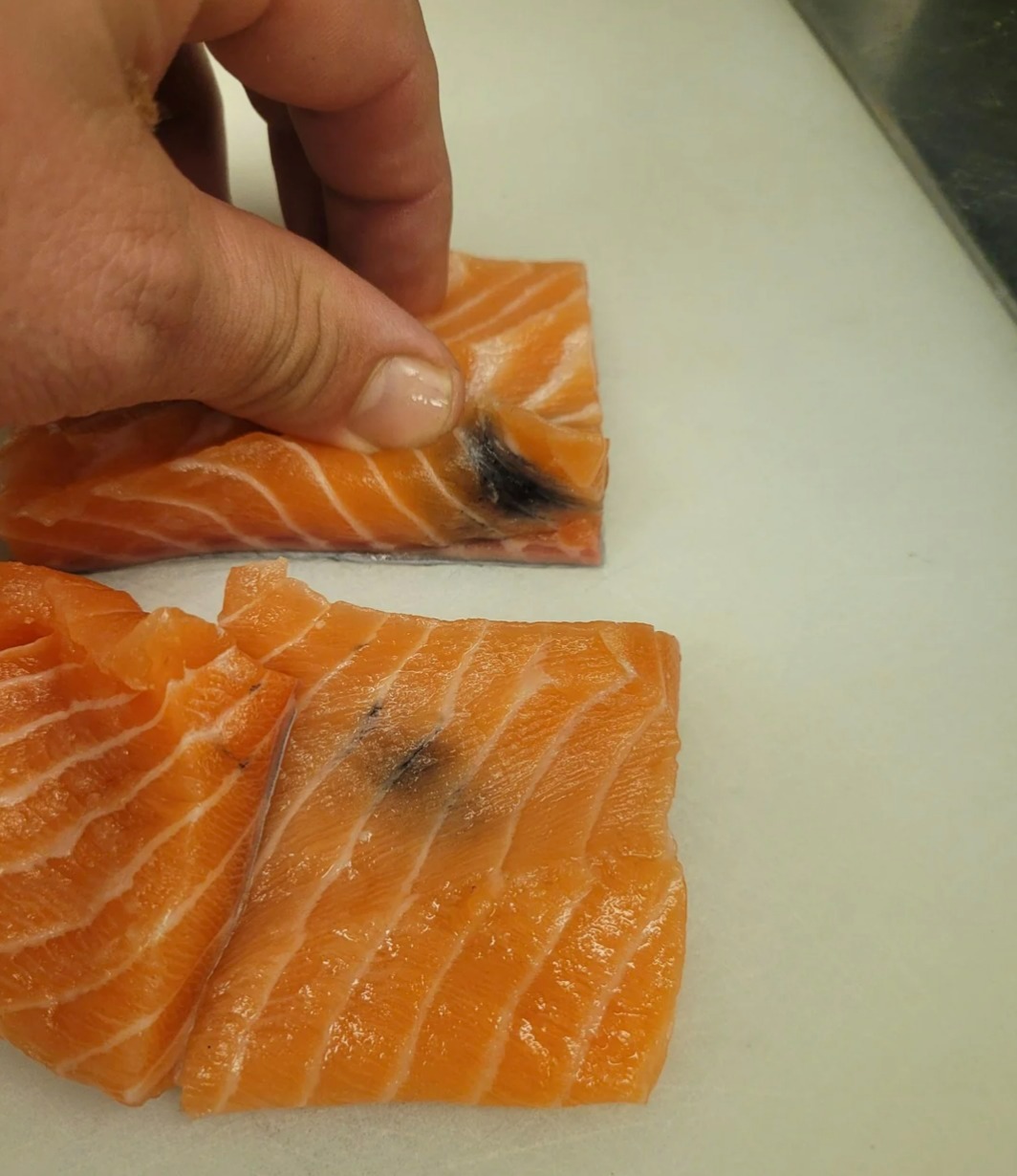Salmon is rich in omega-3 fatty acids — healthy fats that are also prone to oxidation
When frozen fish is exposed to air (even in packaging), fats break down and can turn yellow or brown
This is more common in fatty cuts and long-term frozen storage
✅ The color change doesn’t always mean the fish is spoiled — just that the fats have started to degrade.
2. Astaxanthin Concentration
Salmon get their pink color from astaxanthin, a natural antioxidant found in their diet (like krill and algae)
During freezing, this pigment can concentrate or shift, making some areas appear darker or more golden
✅ This is not harmful — just a visual change.
3. Dehydration (Freezer Burn)
If the salmon wasn’t airtight, moisture can escape, leaving dry, discolored patches
Freezer-burned areas may look pale, whitish, or yellowish
Texture becomes tough, but it’s still safe to eat
✅ Just trim off the worst parts before cooking.
✅ How to Tell If Your Salmon Is Still Safe to Eat
Color alone isn’t enough. Use your senses:
Smell
Mild, clean, ocean-like scent
Strong, sour, ammonia-like odor
Texture
Firm, moist
Slimy, mushy, or sticky
Color
Light yellow tint, golden spots
Green, gray, or black mold
Taste (if unsure)
Mild, slightly sweet
Bitter, sour, or “off” taste
✅ When in doubt, throw it out.
🛡️ How to Prevent Discoloration in Frozen Salmon
Wrap tightly
Use vacuum-sealed bags or double-wrap in plastic + foil
Label & date
Use within
3–6 months
for best quality
Remove air
Prevents oxidation and freezer burn
Freeze quickly
Flash-freeze on a tray before storing
Store at 0°F (-18°C) or below
Slows fat breakdown
❄️ The sooner you eat it, the better it tastes and looks.
🍽️ Can You Still Cook Yellow-Tinted Salmon?
✅ Yes — if it passes the smell and texture test.
see next page
ADVERTISEMENT

